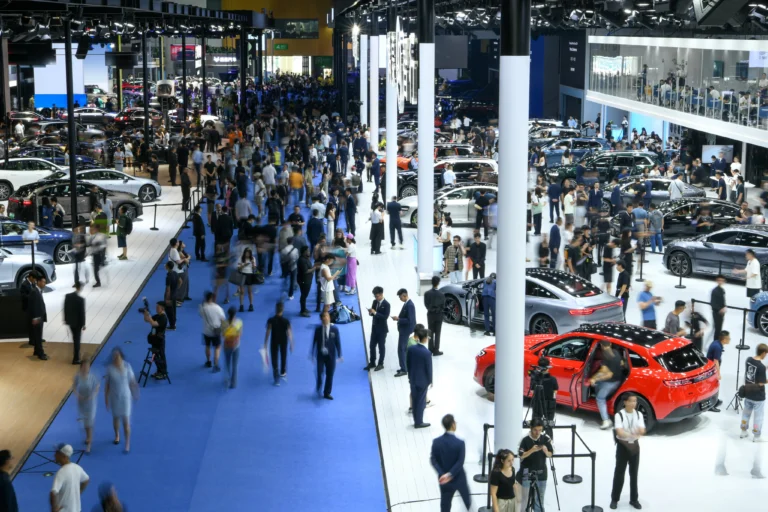The automobile industry in Pakistan has witnessed significant transformations in recent years, evolving to meet both local needs and global standards. As the country grapples with economic challenges, technological advancements, and shifting consumer preferences, several trends are shaping the future of this vital sector. From electric vehicles (EVs) to increased localization and a push for sustainability, the trends in Pakistan’s automobile industry reveal a landscape ripe for innovation and growth.
1. Rise of Electric Vehicles (EVs)
One of the most exciting trends in Pakistan’s automobile sector is the increasing adoption of electric vehicles. The government has laid out an ambitious Electric Vehicle Policy aimed at promoting EVs to reduce reliance on fossil fuels and lower greenhouse gas emissions. As part of this policy, incentives such as tax breaks and reduced registration fees for electric vehicles have been introduced to attract both manufacturers and consumers.
Several local and international companies have started rolling out electric models, reflecting a shift in consumer preferences towards greener alternatives. Notable examples include the introduction of the first locally assembled EVs, such as the Audi e-tron and the Kia Niro EV, which have garnered positive responses from consumers. As charging infrastructure improves, with more charging stations being established across major cities, the momentum behind EV adoption is expected to grow.
2. Focus on Localization
Localization is another key trend reshaping the automobile industry in Pakistan. Historically, the automotive sector relied heavily on imported components, which contributed to high production costs. However, recent initiatives aimed at increasing local manufacturing capabilities are gaining traction. The government is encouraging auto manufacturers to source parts locally, which not only reduces costs but also fosters economic growth and job creation.
Companies like Indus Motor Company and Pak Suzuki have begun investing in local suppliers, creating a ripple effect that supports small and medium-sized enterprises (SMEs) in the supply chain. This shift towards localization not only strengthens the domestic industry but also enhances the overall resilience of the automotive sector against global supply chain disruptions.
3. Increasing Demand for SUVs
In recent years, there has been a noticeable shift in consumer preferences towards sports utility vehicles (SUVs). Factors such as rising disposable incomes, urbanization, and changing lifestyles are driving this trend. Consumers in Pakistan are increasingly looking for vehicles that offer not only functionality but also a sense of status and luxury.
As a response to this demand, automakers are expanding their SUV offerings. Brands like Toyota, Honda, and Kia have launched new models, including the Toyota Fortuner and the Kia Sportage, which have quickly gained popularity. This surge in SUV demand is reshaping the market dynamics and pushing manufacturers to adapt their strategies to cater to evolving consumer tastes.
4. Digital Transformation and E-Commerce
The rise of digital technologies is revolutionizing how automobiles are marketed and sold in Pakistan. With the proliferation of smartphones and internet connectivity, online car sales platforms are becoming increasingly popular. Consumers are now able to browse, compare, and purchase vehicles from the comfort of their homes.
Automakers are also leveraging digital marketing strategies to engage with potential customers. Virtual showrooms, online booking systems, and augmented reality experiences are enhancing the consumer journey. As e-commerce continues to thrive, dealerships are adapting by providing seamless online experiences, making it easier for consumers to explore their options.
5. Sustainability and Green Manufacturing
As global awareness of environmental issues increases, sustainability is becoming a core focus for the automobile industry in Pakistan. Manufacturers are recognizing the importance of adopting green practices throughout their operations. This includes reducing waste, optimizing energy consumption, and implementing environmentally friendly manufacturing processes.
Some companies are investing in eco-friendly technologies, such as using recycled materials in production and adopting renewable energy sources for manufacturing plants. Additionally, there’s a growing emphasis on promoting fuel-efficient vehicles that produce lower emissions. This trend not only aligns with global sustainability goals but also appeals to environmentally conscious consumers.
6. Challenges and Opportunities Ahead
Despite the promising trends, the Pakistani automobile industry faces several challenges. Issues such as fluctuating currency rates, political instability, and regulatory hurdles can impact production and sales. Moreover, the lack of a robust charging infrastructure for EVs poses a significant barrier to their widespread adoption.
However, these challenges also present opportunities for innovation and growth. For instance, the development of a comprehensive charging network could stimulate the EV market, while investments in local manufacturing can enhance supply chain resilience. Furthermore, fostering partnerships between the government and private sector can create a conducive environment for sustainable growth in the automotive industry.
Conclusion
The automobile industry in Pakistan is on the cusp of a transformative era, driven by trends such as the rise of electric vehicles, localization efforts, and a growing demand for SUVs. As manufacturers embrace digital transformation and prioritize sustainability, the future looks promising. However, addressing challenges through innovative solutions and collaborative efforts will be crucial to fully realize the potential of this dynamic sector. As Pakistan navigates these changes, it stands to not only boost its economy but also position itself as a key player in the regional automobile landscape.

